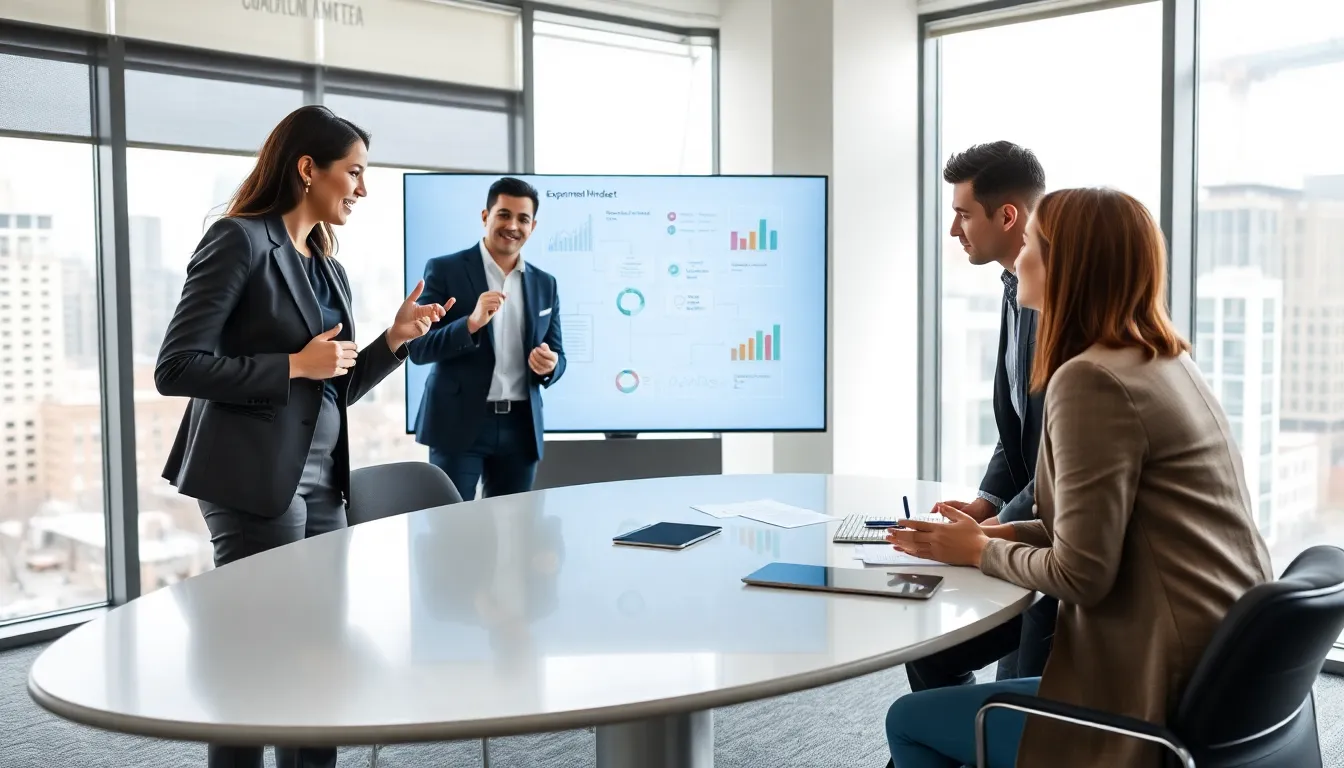Have you ever found yourself staring at a problem, feeling like you’re trapped in a game where the level just keeps getting harder? Don’t worry: you’re not alone. An experimental mindset is like your trusty sidekick in a quest for innovation and growth. Rather than seeing failure as a roadblock, it transforms setbacks into stepping stones. In this text, we dive deep into what this mindset entails, why it’s crucial today, and how to cultivate it, all while having a bit of fun along the way. So, strap in, and let’s get experimental.
Table of Contents
ToggleUnderstanding the Experimental Mindset

At its core, an experimental mindset revolves around curiosity, creativity, and willingness. It’s an approach where individuals embrace uncertainty and view challenges as opportunities for discovery. This mindset thrives on asking questions like, “What if?” and “How can we make this better?”
To truly understand this concept, imagine a scientist in a lab. They’re not just looking for the right answer: they’re running tests, tweaking variables, and eagerly awaiting the next breakthrough. Similarly, in any field, whether it’s business, education, or personal growth, adopting an experimental mindset encourages innovative thinking and problem-solving. It promotes an environment where ideas can be shared, tested, and improved upon, rather than kept in a neat little box labeled “conventional wisdom.”
This mindset also allows for flexibility. When faced with unexpected results, those with an experimental approach don’t panic. Instead, they reevaluate and adjust their strategies, leading to richer insights. If there’s one takeaway from this section, it’s that being experimental means stepping outside the comfort zone, it’s where the real magic happens.
The Importance of an Experimental Mindset in Today’s World
In today’s fast-paced world, adaptability is paramount. Markets evolve, technology advances, and consumer preferences shift almost overnight. Businesses and individuals who cling to rigid structures often find themselves left behind. Here’s where the experimental mindset shines.
Key Characteristics of an Experimental Mindset
- Curiosity: This aspect underlies the very essence of experimentation. Individuals must remain curious about the world around them and eager to learn. Curiosity fuels their desire to ask questions and explore uncharted territories.
- Tolerance for Failure: Rather than viewing failure as something to be feared, a key characteristic of an experimental mindset is accepting it as part of the journey. Each setback provides vital feedback for future endeavors.
- Openness to Feedback: Incorporating input from others is crucial. Feedback offers fresh perspectives and insights that might have been overlooked. An experimental mindset welcomes constructive criticism as a means to grow.
- Continuous Learning: In an ever-changing environment, continuous learning helps individuals stay ahead. This characteristic emphasizes the need to evolve and adapt based on new information and experiences.
This combination of traits not only encourages individual growth but also cultivates a culture of innovation within organizations, promoting collaboration and resilience.
How to Foster an Experimental Mindset
Cultivating an experimental mindset isn’t merely a switch to flip: it’s a process that requires intention and effort. Here are practical steps to get started:
Practical Steps to Cultivate Experimentation
- Encourage Curiosity: Foster an environment where questioning the status quo is welcomed. This could be through brainstorming sessions or informal discussions encouraging teammates to voice their curiosities.
- Embrace Small Experiments: Not every experiment needs to be grand in scale. Start small with manageable projects that can provide insights without overwhelming resources. Testing new ideas on a small scale allows for safe failure and learning.
- Create Safe Spaces for Failure: Establish a culture where failure is not stigmatized. Celebrate the learning that comes from setbacks, and spotlight individuals who have turned failures into valuable lessons.
- Promote Collaborative Learning: Encourage teamwork and partnerships. Cross-functional teams can bring diverse perspectives to a problem, enhancing creativity and producing more innovative solutions.
- Reflect and Iterate: After an experiment, take time to reflect. What worked? What didn’t? Use these insights to inform the next steps and iterate on the current strategies.
Building an experimental mindset is not a one-off effort. It’s a continuous cycle of learning, reflecting, and adapting, making it crucial for both personal and professional growth.
Case Studies of Successful Experimental Mindsets
Numerous companies have embraced an experimental mindset, leading to phenomenal successes.
One iconic example is Amazon. Rather than sticking with traditional retail strategies, Amazon constantly experiments with everything from delivery methods to customer interaction. Their willingness to test new ideas, like drone delivery or cashier-less stores, has catapulted them to the forefront of the retail industry.
Another example can be found in Google, which famously allows employees to spend 20% of their time on personal projects. This initiative has led to the development of significant products like Gmail and AdSense, showcasing the power of fostering innovation through experimentation.
Challenges and Misconceptions of an Experimental Mindset
While the benefits are clear, some challenges need addressing. One misconception is that experimentation only leads to success. The reality is that many experiments can fail. But, each failure provides immense learning opportunities. Also, not everyone is comfortable with uncertainty and risk, which can lead to resistance in adopting this mindset.
To overcome these challenges, leaders must cultivate an environment supportive of experimentation, helping individuals feel comfortable navigating the murky waters between failure and innovation.




